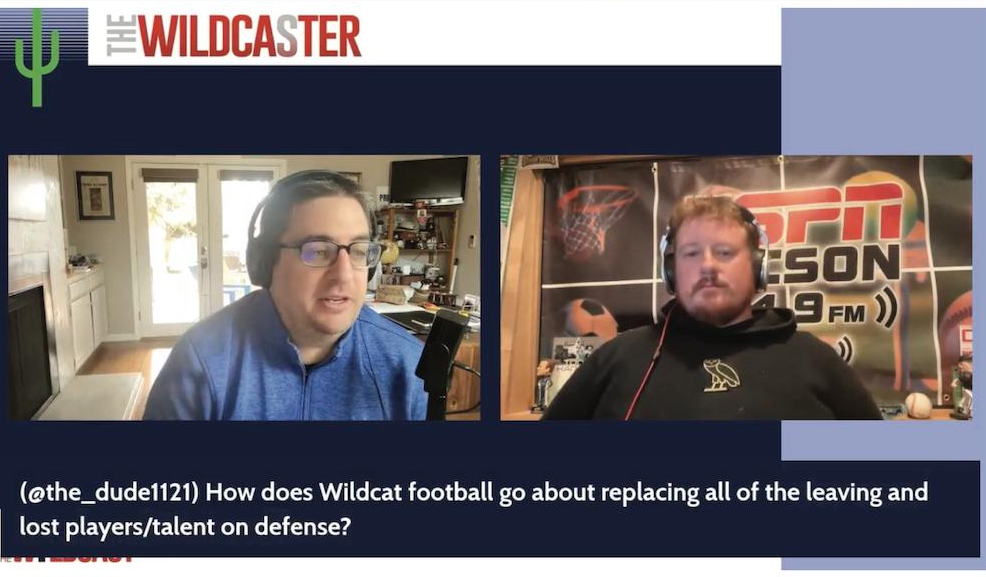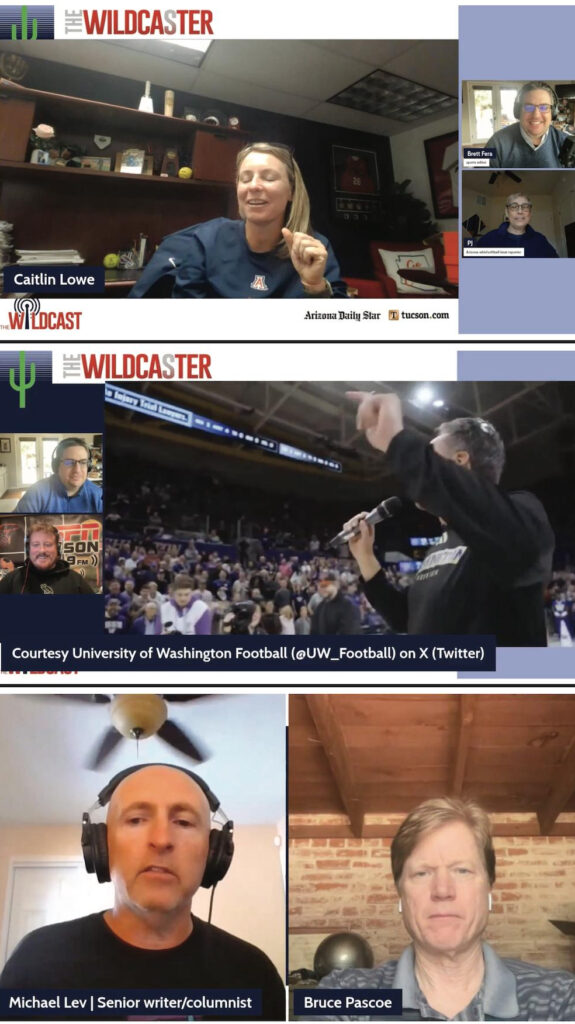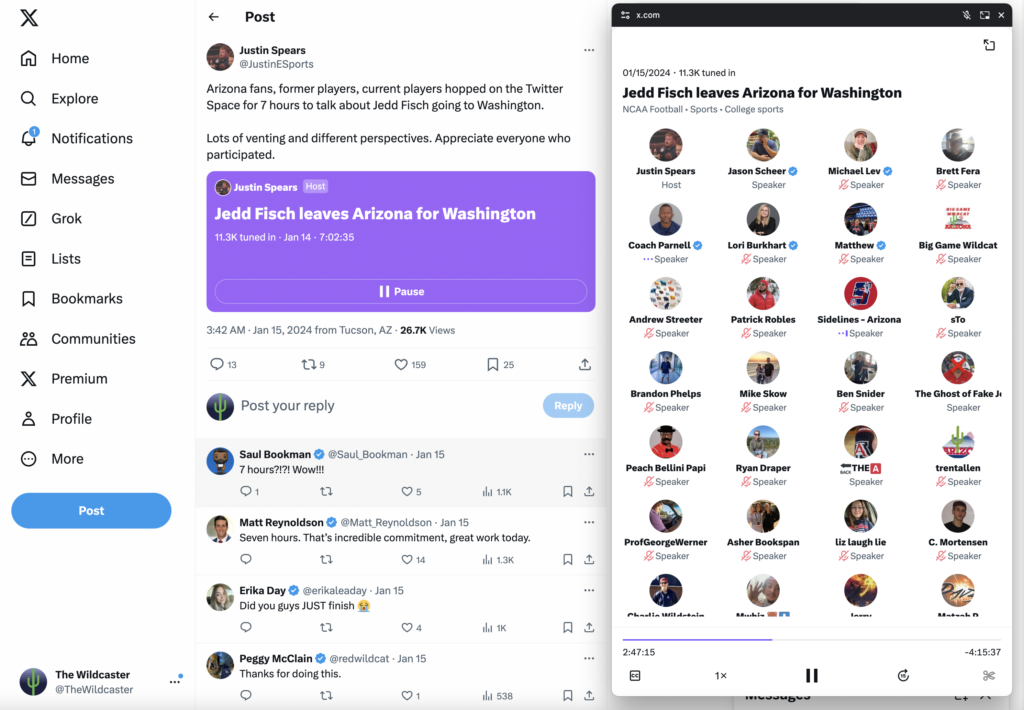How the Arizona Daily Star is building strong connections with college sports fans
Brett Fera, Arizona Daily Star, Here’s an idea to steal and adapt: Wildcaster LIVE aims to connect fans with trusted reporters.
Here’s an idea to steal and adapt: Wildcaster LIVE aims to connect fans with trusted reporters. This is a series on Better News to a) showcase innovative/experimental ideas that emerge from the Knight-Lenfest Newsroom Initiative and b) share replicable tactics that benefit the news industry as a whole.
This “win” comes from Brett Fera, sports editor at the Arizona Daily Star, which participated in the 2021 Major Market Table Stakes cohort, API’s Communities Sprint in 2022 and the American Press Institute-News Product Alliance product development sprint in 2023.
Question: What problem were you trying to solve, and why was that problem strategically important to your organization?
Answer: Tucson is a community with big city amenities and small town values. Yet, even with a million-plus residents calling it home, Tucson is every bit a “college town,” with the University of Arizona serving as one of the region’s largest employers and a centerpiece for development, economic output and entertainment. The Arizona Wildcats have long been a community focal point.

Screens from past Wildcaster LIVE episodes (Arizona Daily Star)
The university’s NCAA Division 1 program also has long been a focus of reporting at the Arizona Daily Star, Southern Arizona’s most prominent news source for nearly a century and a half. One of the Star’s greatest modern journalistic achievements — winning a Pulitzer Prize in 1981 — was based on investigative reporting into alleged transgressions surrounding the school’s football program.
Fast forward to today, and the local community’s clamoring for anything and everything tied to their Arizona Wildcats has increased tenfold. So here’s one central question we at the Star would like to answer: If dedicated sports fans can’t be in the locker room or at field level themselves, is the next best thing to become even more connected to reporters who have that sort of access?
Our audience told us they want to be a more engaged part of the conversation. The Star sports staff set out to find a way to make that happen.
Q: How did you go about solving the problem?
A: The Arizona Daily Star’s sports department sought to create a way for fans to connect with their favorite sports “through” our staff — the reporters who can provide information, anecdotes and details that can’t be found anywhere else.
We developed Wildcaster LIVE to accomplish just that. A sibling to Wildcaster (a mobile app) and The Wildcast (an episodic audio podcast), Wildcaster LIVE is the Arizona Daily Star’s reader-centric, virtual discussion platform that allows University of Arizona sports fans to “meet up” virtually and learn more about the sports teams and personalities they love by connecting with the reporters they admire and respect.
During production, Wildcaster LIVE is similar to a small group Zoom or other video conference. Staffers and guests are recorded remotely, and audio equipment (high-end microphones, studio headphones, etc.) helps ensure professional-level audio.
Staffers host or operate the platform during recording, floating in external graphics, videos and other elements to create a production that viewers see as fully “Wildcaster” branded, whether watching via Tucson.com or social channels.
While livestreaming to sites such as YouTube, Facebook and X is possible, most Wildcaster LIVE sessions are prerecorded, then posted to the aforementioned sites as videos. We also upload the audio as new episodes for our long-running Wildcast Podcast.
Q: What worked?
A: Here are several techniques that helped make this initiative work:
Audience research: We surveyed our audience to get an idea of their initial interest. Then, to drill down and get more specific feedback, we conducted empathy interviews with “power users” of our existing platforms and offerings, as well as members of our target audiences.
Pivoting quickly: A key moment occurred while we were still developing Wildcaster LIVE.
In early January 2024, we faced major sports-centric breaking news that required us to find an immediate option for connecting with our audience (those aforementioned deep-rooted University of Arizona sports fans).
While our staff and other news outlets had reported that a long-term contract extension worth upwards of $25 million was in the works for the University of Arizona’s head football coach, he left the school just days after a significant bowl victory for the same job at another university — one that would pay him roughly double that amount.
It’s not unusual in college sports for coaches to leave and take other jobs for more money. But for a litany of reasons, this one hit the Tucson fanbase hard. We wouldn’t go as far as saying it was worse than we expected, but the intensity was significant and required our immediate response if we wanted to channel that fan passion into valuable engagement.
Our lead college football beat writer started a public Spaces session on X. With several staffers serving as hosts and moderators over seven hours, we engaged with more than 11,300 local and international fans. The event attracted 63,000 views.

The Arizona Daily Star’s lead college football beat writer and other staff hosted a seven-hour conversation on X Spaces when Wildcats coach Jeff Fisch left the team in January. (Arizona Daily Star)
Developing generalists: We’ve been able to cross-train staff on setting up, running, exporting and distributing content from these Wildcaster LIVE sessions.
This includes:
- building the live session through our white-label recording and streaming platform
- inviting and ensuring accessibility for guests
- creating and importing graphics, billboards, images, video and other elements
- ensuring audio and video technology are working
- recording the video and audio
- exporting both and uploading to separate platforms
While our team members are accustomed to producing stories and similar traditional content at epic rates, our “conversation-based content” — podcasts, video chats, etc. — has long been harder to maintain. The efficiencies created via Wildcaster LIVE have changed that dramatically, and our team is producing 70% more “conversation-based content” per month since we launched in March 2024.
Q: What didn’t work?
A: Our competitors produce video podcast-style programs and let audience members comment through YouTube or other platforms. That’s not what Wildcaster LIVE was supposed to be. We realized through surveys and empathy interviews that greater impact might come from bringing those audience members directly into the conversation.
To start, we’d take a new spin on the reader mailbag format and have our trusted journalists address reader questions (curated through email, social media and other channels) in a live format. Our team would mention fans by name and share their points of view. We’d make sure they knew about it through social tagging. This was just a start, and we wanted to bring fans deeper into the conversation.
That created a challenge. We were unsuccessful at developing an effective vetting process for selecting which audience members would participate. Would their views enhance or detract from our credibility? How could we get a commitment from individuals to participate? We are still working on creating that vetting process.
Q: What happened that you didn’t expect?
A: Staffing issues slowed us down. As Wildcaster LIVE was in early development, one of our key staff members was pulled away due to unforeseen circumstances. That paused development for months.
In hindsight, we should have started with a larger team, including staff members with multiple skills, so that we wouldn’t experience any significant gaps if one member stepped back.
Q: What advice would you give to others who try to do this?
A: Keep going, even if progress is slow. Don’t be paralyzed getting to the starting line. Lap one will be harder than laps two, three and four. You are closer to a minimum viable product than you think.
Our newsroom faces daily deadline pressures. We often told ourselves that tomorrow would be when we could work on what’s next. But waiting until tomorrow often didn’t work. In short, dive into the pool. You’re going to adapt quickly. We found that adaptation, with incremental baby steps, made the product better in the long run.
Q: What’s next for this work?
A: Keep the conversation going and take it beyond sports. The primary purpose of Wildcaster LIVE was to engage with our audiences beyond the traditional story. But in creating Wildcaster LIVE, we also strengthened our processes for producing audio-related work, including podcast episodes and adding video to audio distribution channels. Because of that, we want to develop Wildcaster LIVE as a tool to connect with audiences interested in opinions, politics and community/features reporting.